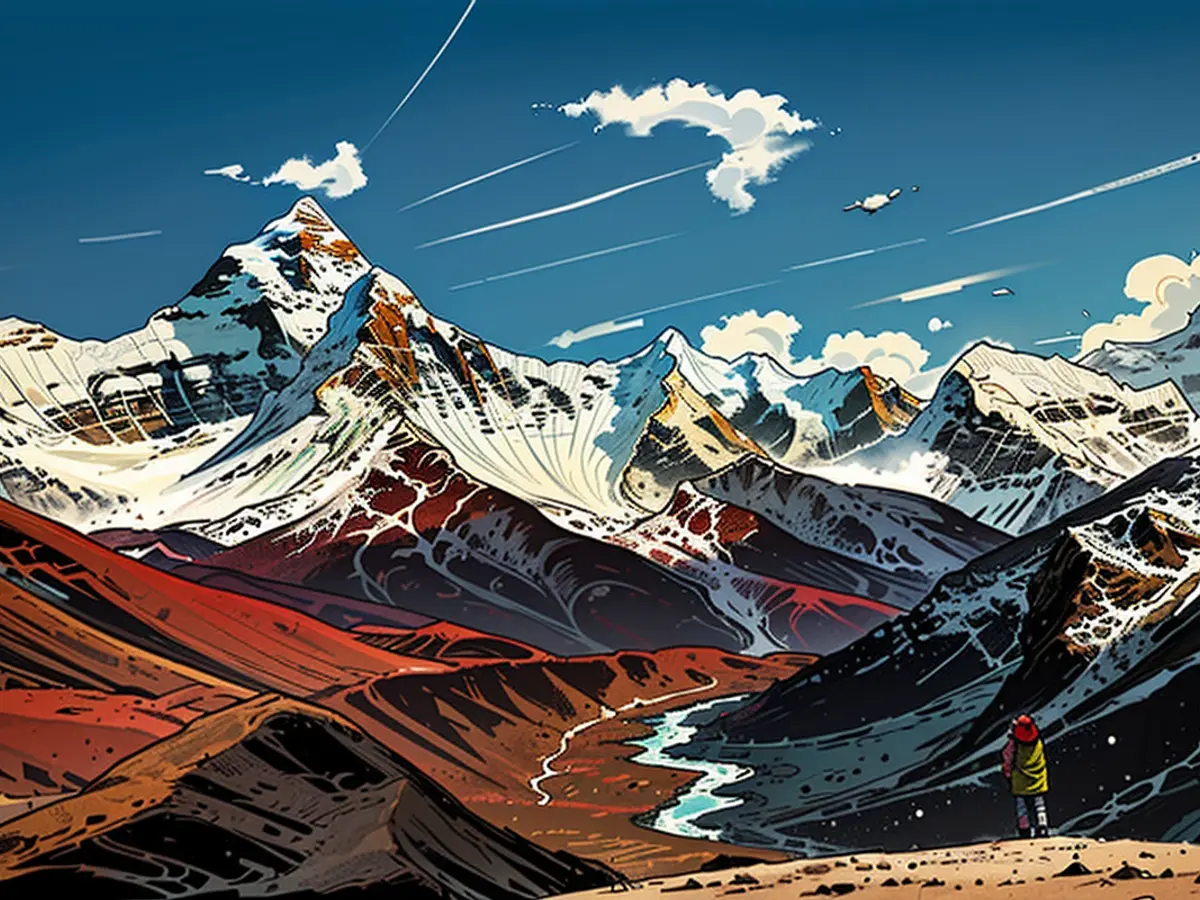The reason Behind Everest's Elevation Increase
At an astounding 8,849 meters tall, Mount Everest holds the title as the world's highest peak. However, this mountain giant continues to expand at a rate faster than other Himalayan peaks. Recent research has uncovered a potential explanation for this growth spurt.
This extraordinary expansion and height might be partially attributed to a nearby river. An analysis using a computer model suggests that approximately 89,000 years ago, the Arun River carried such a vast volume of water that it carved a significant valley into the Himalayas. The eroded rock lessened the weight, leading to the land rising, thereby adding an extra 15 to 50 meters to Mount Everest's height. This ongoing process adds approximately 2 millimeters to Mount Everest's growth each year, states a team led by Jin-Gen Dai from the China University of Geosciences in Beijing.
The Himalayas are a fold mountain range formed by the collision of the Indian tectonic plate with Eurasia. Mount Everest stands 200 meters taller than the next highest peaks — quite the surprise given the Himalayas' generally uniform tectonic structure, as mentioned in a study published in "Nature Geoscience". The researchers sought to find if specific river systems could be responsible for this extraordinary height difference.
Similar phenomena, such as isostatic uplift, have been extensively studied in regions like Scandinavia, Canada, and Siberia. These areas experienced significant uplift shortly after the collapse of an ice cap over 3 kilometers thick around 11,700 years ago. Reduced pressure on Earth's crust led to the mantle's ductile part rising, elevating the ground by several hundred meters. The researchers found a comparable mechanism when rivers erode rock, thus reducing pressure on the Earth's mantle.
An additional 15 to 50 meters in height
To explore this mechanism in Mount Everest's context, Dai and colleagues created a computer model. They analyzed the force exerted by river water on the riverbed's bottom and sides. The initial model was based on the Arun River's current appearance. "The Arun River drains the southern expanses of Tibet and the northern slopes of Mount Everest before flowing through a narrow 35-kilometer gap with a 7-kilometer elevation difference, forming a narrow gorge." The research team suspected that such a landscape could not have formed without substantial amounts of water.
By implementing the model, the researchers went back in time and simulated the river's evolution under various conditions. The simulations suggested that around 89,000 years ago, erosion created a link between the Arun and another river, diverting water from the former river into the Arun, resulting in a significant increase in water flow. This diversion process is often referred to as "river piracy." The combined water power likely carved the deep gorge.
The ground uplift resulting from this extreme erosion primarily affected the river itself and its surrounding area, such as Mount Everest, to a lesser extent. Depending on the magnitude of uplift, Mount Everest could have increased in height by up to 50 meters. The simulations also indicate that this effect contributes approximately 0.16 to 0.53 millimeters to Mount Everest's annual growth today. "Our study uncovers a previously unknown mechanism of rock uplift that has been active since river piracy occurred," Dai and colleagues conclude.
The Himalayas, where Mount Everest is located, are known for their uniform tectonic structure, making its height difference from other peaks surprising. The Arun River, which drains the southern expanses of Tibet and the northern slopes of Mount Everest, played a significant role in adding an additional 15 to 50 meters in height to Mount Everest.







